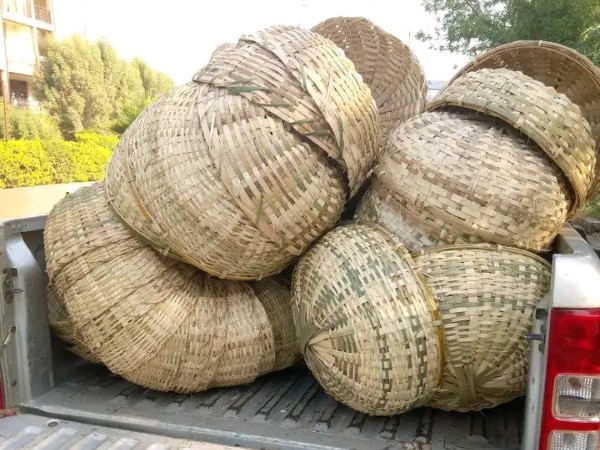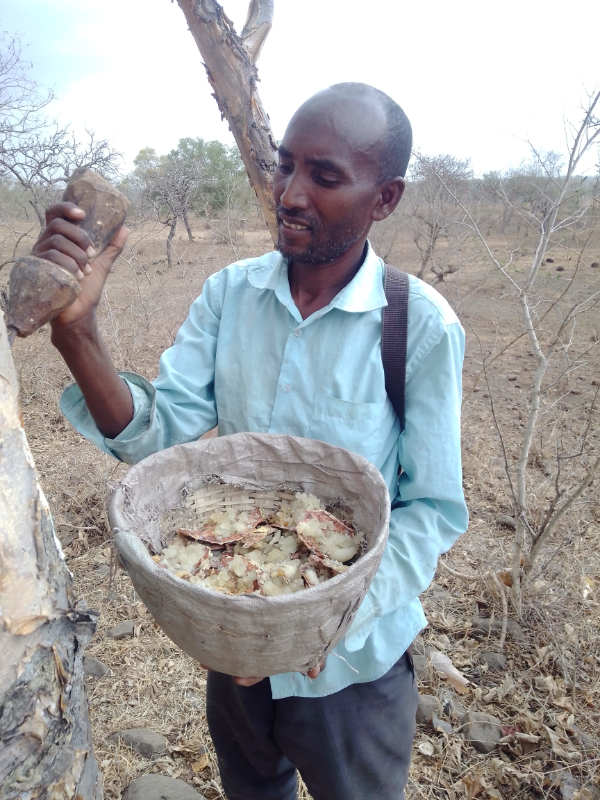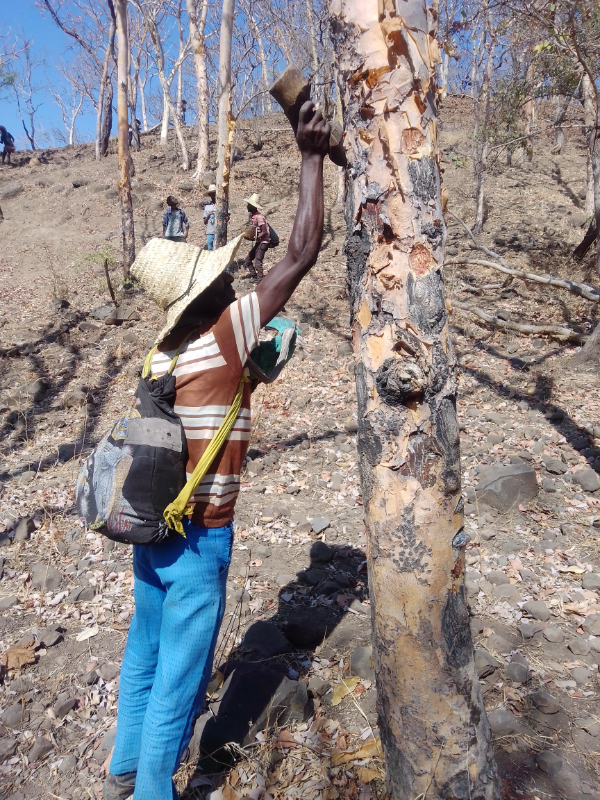Ecosystem restoration in Ethiopia

Frankincense collected and packed by the local communities. Credit - Muahabawu Taju, Sunarma.
Developing rural pathways to community resilience and ecosystem restoration
Boswellia forests in Ethiopia provide an important source of frankincense, alongside other important ecosystem services. However, these dryland forests are threatened by severe biodiversity loss and degradation. To reverse this trend of forest land degradation and to increase farmland productivity, the project has introduced multiple community-led practices through well-coordinated and integrated approaches. These include inclusive decision-making and actively involving local communities and local authorities in the governance of the forest land, viable harvesting and regeneration techniques for frankincense, and promotion of sustainable land management of farmland.
The project aims to enhance livelihood opportunities for communities relying on agriculture and non-timber forest products (NTFPs) while protecting the forest land from degradation and biodiversity loss. Efforts include raising awareness among communities, building trust between stakeholders, and introducing improved techniques for frankincense tapping and collection.

The project supports eight forest management cooperatives (FMCs) through the project. Through training and awareness programmes, the local community has gained knowledge on sustainable tapping practices, tree maturity, and the importance of resting periods for trees. Additionally, FMCs have implemented byelaws to regulate resource use and ensure fair distribution of benefits. Collaboration among stakeholders, including annual forums, has facilitated collective action against illegal forest resource exploitation.
Among these important steps and approaches is the introduction of improved techniques of frankincense tapping and collection. Tappers are trained on the new techniques adopted from India. According to the Indian tapping techniques, the tapping is done in certain intervals, for example, a gap is ensured between one tapping activity and the next one. This gives good resting time to the tree before it is tapped for the next time. This also allows the first tapping point to fully drain out before another tapping is applied. This has also introduced a systematic procedure and the local community is encouraged to tap and harvest frankincense on their own rather than relying on tappers from outside who give less attention to the health of the trees for the future and sustainable use of the trees' resources.

With these trainings, the local community has also increased the awareness on which tree should be tapped and which one will first need to reach maturity, as well as which forest lots will need resting time and at what intervals. Thanks to the project support on tools, awareness-raising, and provision of training, a couple of the FMCs decided to leave total or part of their forests fallow last year.
To encourage collective efforts and provide for a fair share of the resources and the benefits, each FMC has introduced byelaws and had these approved by all the members. With the project support and coordination, a stakeholder forum has been established to meet at least once a year. This has provided an opportunity to the FMCs and their members to bring their concerns and challenges to be heard by experts and the local authorities and to plan for joint action against the illegal use of forest resources. There are examples of arrests by the police of illegal intruders who have been penalised by the local judiciary courts upon the provision of evidence and confession by the culprits.
This approach is helping protect and restore the forest, whilst providing an important income to local communities. As an example, the Das FMC collected 149.79 quintals (14,979 kg) of frankincense in the last season securing an income of 2,374,316 Ethiopian Birrs (~ £15,000). There were a total of 55 members and each of them received 41,351 Birrs (~ £260) which is considered a good amount of money complementing their income from other agriculture sources.

Written by Muahabawu Taju. For more information on this Darwin Initiative Main project 28-010, led by Tree Aid, please click here.

 Back
Back